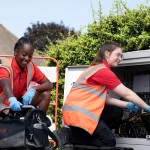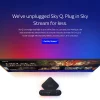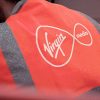EE UK Launch Video Data Pass Add-On for 4G Mobile Customers
Customers of EE‘s UK mobile network who enjoy consuming their 4G data (mobile broadband) allowances by streaming online video are being offered a new Video Data Pass add-on, which effectively allows you to stream as much as you like without using up your mobile data allowance.
At present EE‘s customers can already benefit from 6 months of free Apple Music streaming (£9.99 per month thereafter) and 3 months of free access to BTSport (£5 thereafter for app access and another £10 for TV casting) without eating into your data allowance. On top of that they’ve today added the option of 6 months free Amazon Prime Video streaming (£5.99 thereafter) and 6 months free of MTV Play (£3.99 thereafter).
Alternatively the new Video Data Pass will cost an additional £8.99 per month and for that you’ll be able to stream video content from Netflix, Prime Video, BT Sport, MTV Play and TVPlayer without impacting on your data allowance (only on Pay Monthly plans). Handy if you already subscribe to more than one of those services and EE says they hope to add more video streaming platforms in the future.
Advertisement
Marc Allera, CEO of BT’s Consumer division, said:
“It’s our ambition to offer our customers unrivalled choice, with the best content, smartest devices, and the latest technology through working with the world’s best content providers.
In offering all EE pay monthly mobile customers Prime Video and MTV Play access, in addition to BT Sport and Apple Music – we’re providing them with a wealth of great entertainment they can experience in more places thanks to our superfast 4G network, and soon to be launched 5G service.
So, if they want music on a Monday, telly on a Tuesday, films on a Friday or sport on a Saturday, we’ve got something for them.”
The Video Data Pass is available on a 30-day (monthly) rolling contract term (text VIDEO to 150 in order to get it) and it should also work while roaming around other EU countries. One caveat here is that the pass doesn’t cover data that’s required for things like accessing or browsing the content providers app or for any adverts and images within an app. However the pass does include an additional 200MB of data to help cover such things.
Remember, you will still need a separate subscription for each of the video streaming services in order to access their content. All the above pass does is stop the video content from consuming your mobile data allowance, which may be handy for heavy users of such services as otherwise the excess data charges could become problematic.
Mark is a professional technology writer, IT consultant and computer engineer from Dorset (England), he also founded ISPreview in 1999 and enjoys analysing the latest telecoms and broadband developments. Find me on X (Twitter), Mastodon, Facebook, BlueSky, Threads.net and Linkedin.
« Northumberland’s £1m Voucher Scheme to Boost Superfast Broadband


















































Comments are closed